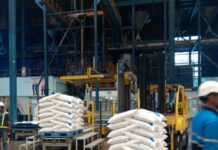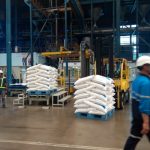Two different settings
The sugar market in NY closed out the week at 18.18 cents per pound, an 8-point drop against the previous week. Together with the real appreciation against the dollar, which closed out at R$5.1400, the drop in sugar in the week reached R$58 per ton in March and, on the 2022/2023 crop average, declined R$52 per ton.
In November/2021, the price curve of the sugar futures market in NY showed a discount that exceeded 10% per year some times. That is, when we analyze the several open maturities, the shortest ones showed a strong appreciation over the longest ones. This is a typical curve in market situations when there is an indisputable lack of the product or the perception of it.
The commodity markets tend to adjust themselves after a stress caused by the lack or excess of the product. When there is a lack of the product, the market participants hurry to adjust their positions in order to “push” this shortage forward by trading the spreads, buying the futures contracts with shorter maturities (where they believe the shortage will happen) and selling the futures contracts with longer maturities (because they believe time will “cure” this momentary tight supply).
When there is an excess of supply or the perspective of a stress-free market in terms of product availability, these same participants hurry to “push” any purchase need forward. And they also do that trading spreads, selling the futures contracts with shorter maturities (because they believe there is too much product availability) and buying the futures contracts with longer maturities (because they believe time will “cure” this excess of supply). That’s how it always works.
That’s why we have mentioned here many times that the spreads traded on futures markets are the explicit display of the feeling of the physical market participants about the perception they have as far as product availability goes.
The futures price curve can similarly be affected by distortions between the domestic and foreign interest rates. The larger the difference between them, the larger the adjustment of the exchange rate traded on the spot market valued on the future maturity will be. So, by getting more units of the local currency against the dollar along this curve, the seller will be more predisposed to pressuring the commodity curve in dollars.
Today, the price curve in NY has an exogenous component – the interest rates of the Brazilian Central Bank – that affects the angle of this curve, making it steeper. For every 1% up on the Brazilian interest rates, the price curve in NY suffers a discount around 10 points for a twelve months period and 25 for twenty-four months. Even if the interest rate were zero, the NY curve would still be slightly inverted. And that’s the point I’d like to call your attention to.
The sugar market is facing two distinct settings. On the short term, in other words the 2022/2023 crop of the Center-South (from April/2022 to March/2023), it is neutral to bearish. It seems like all the elements of the sugar fundamentals have already been given and incorporated into the price. The perspective of a better crop (the average of twenty consulting firms is around 554 million tons of sugarcane) and better production in Thailand, India, Pakistan, Mexico and Guatemala are enough to meet a possible additional demand. The physical export market is anemic and the domestic sugar market is experiencing stock surpluses, a decrease in the pace of the consumption of industries, and their clear tendency to put off purchasing or building strategic stocks.
Sugar production cost (cash cost) in the Center-South is way below its pairs and despite having gone up considerably this year, with an actual increase of 32%, it still allows the market to eventually go for 16 cents per pound. And we all know that markets exaggerate in the high and in the low.
On the long term, that is, from the 2023/2024 crop on, any bet on lower prices can be a shot in the foot. The futures prices of the 2023/2024 crop are on average 4% cheaper than the prices of the 2022/2023 crop. We have the NDF (non-deliverable forward) curve promoting this discount. However, and this is a very important point, the Center-South sugarcane supply will still go through instabilities that can have a huge consequence on the availability of the product from that crop on.
We have practically been producing the same amount of ATR since the 2008/2009 crop. Soybean and corn production have had huge losses due to weather problems Brazil has faced over the last months and continue with extremely profitable prices for their producers. Many sugarcane growers are migrating to grains in order to find better profits. Some Center-South mills are already considering they may lose from 1.5 to 4% of sugarcane (from cane growers) due to this migration.
Nothing is set in stone in commodities. And we might still face exogenous events that can affect the reasoning mentioned above. For instance, a more vigorous recovery of the global economies, the consumption of fuel in the Northern Hemisphere in the summer this year, the delay on the start of the Center-South crop, a geopolitical crisis caused by Russia, just to mention a few.
The funds are liquidating their longs. The July/October and October/March spreads are in a slight carry of 4% and 5%, respectively. What will happen to May when March expires at the end of this month? Will it stay in a carry too? And would the funds be short as they normally are on markets in a carry? And what if the real continues appreciating against the dollar? Will the mills that haven’t fixed at R$2,400 per ton feel regretful and fix at any price?
Last but not least, as an experienced trader has put it, “Who will receive sugar on the expiration of the March contract on an inverted curve with a small demand?” There is never a dull moment.
To read the previous episodes of World Sugar Market – Weekly Comment, click here
To get in touch with Mr. Arnaldo, write on arnaldo@archerconsulting.com.br












